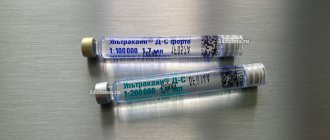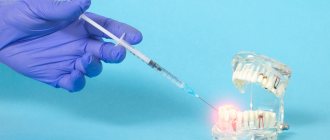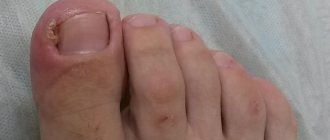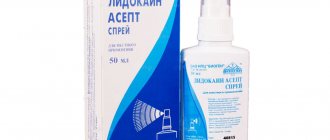Lidocaine
The toxicity of lidocaine increases when it is used simultaneously with cimetidine due to an increase in the concentration of lidocaine; this requires a reduction in the dose of lidocaine. Both drugs reduce hepatic blood flow. In addition, cimetidine inhibits microsomal activity. Ranitidine slightly reduces the clearance of lidocaine, which leads to an increase in its concentration. Antiviral agents (eg, amprenavir, atazanavir, darunavir, lopinavir) can also cause increased serum concentrations of lidocaine.
Hypokalemia caused by diuretics may reduce the effect of lidocaine when used simultaneously (see section "Special Instructions").
Lidocaine should be used with caution in patients receiving other local anesthetics or agents structurally similar to amide-type local anesthetics (eg, antiarrhythmic agents such as mexiletine, tocainide) because systemic toxic effects are additive.
Separate drug interaction studies have not been conducted between lidocaine and class III antiarrhythmic agents (eg, amiodarone), but caution is advised.
In patients concomitantly receiving antipsychotics that prolong or may prolong the OT interval (e.g. pimozide, sertindole, olanzapine, quetiapine, zotepine), prenylamine, epinephrine (with occasional intravenous administration) or 5-HT3-serotonin receptor antagonists (e.g. tropisetron, dolasetron ), the risk of developing ventricular arrhythmias may increase.
Concomitant use of quinupristin/dalfopristin may increase lidocaine concentrations and thus increase the risk of ventricular arrhythmias; their simultaneous use should be avoided.
Patients receiving concomitant muscle relaxants (eg, suxamethonium) may have an increased risk of enhanced and prolonged neuromuscular blockade.
Cardiovascular insufficiency has been reported following the use of bupivacaine in patients receiving verapamil and timolol; lidocaine is similar in structure to bupivacaine.
Dopamine and 5-hydroxytryptamine lower the seizure threshold to lidocaine. Opioids appear to have anticonvulsant effects, supported by evidence that lidocaine lowers the seizure threshold to fentanyl in humans. Combinations of opioids and antiemetics, sometimes used for sedation in children, may lower the seizure threshold to lidocaine and increase its CNS depressant effects.
The use of epinephrine with lidocaine may reduce systemic absorption, but with accidental intravenous administration the risk of ventricular tachycardia and ventricular fibrillation increases sharply.
The simultaneous use of other antiarrhythmics, β-blockers and blockers of “slow” calcium channels may further reduce AV conduction, ventricular conduction and contractility.
The simultaneous use of vasoconstrictors increases the duration of action of lidocaine.
Concomitant use of lidocaine and ergot alkaloids (eg, ergotamine) can cause severe hypotension.
Caution must be exercised when using sedatives as they may interfere with the action of local anesthetics on the central nervous system.
Caution should be exercised with long-term use of antiepileptic drugs (phenytoin), barbiturates and other inhibitors of liver microsomal enzymes, as this may lead to decreased effectiveness and, as a result, an increased need for lidocaine. On the other hand, intravenous administration of phenytoin may enhance the inhibitory effect of lidocaine on the heart.
The analgesic effect of local anesthetics can be enhanced by opioids and clonidine.
Ethyl alcohol, especially with prolonged abuse, can reduce the effect of local anesthetics.
Lidocaine is not compatible with amphotericin B, methohexitone and nitroglycerin.
With the simultaneous use of lidocaine with narcotic analgesics, an additive effect develops, which is used during epidural anesthesia, but increases the depression of the central nervous system and respiration. Vasoconstrictors (epinephrine, methoxamine, phenylephrine) prolong the local anesthetic effect of lidocaine and can cause increased blood pressure and tachycardia.
Use with monoamine oxidase inhibitors (furazolidone, procarbazine, seleginine) probably enhances the local anesthetic effect of lidocaine and increases the risk of lowering blood pressure.
Guanadrel, guanethidine, mecamylamine, trimethaphan camsylate increase the risk of a pronounced decrease in blood pressure and bradycardia.
Anticoagulants (including ardeparin sodium, dalteparin sodium, danaparoid sodium, enoxaparin sodium, heparin, warfarin, etc.) increase the risk of bleeding. Lidocaine reduces the cardiotonic effect of digitoxin.
Lidocaine reduces the effect of antimyasthenic drugs, enhances and prolongs the effect of muscle relaxants.
When treating the injection site with disinfectant solutions containing heavy metals, the risk of a local reaction in the form of painful swelling increases.
Mixing lidocaine with other medications is not recommended.
Lidocaine – aerosol, gel, spray
Dosed spray for local use. Locally, in dentistry, otolaryngology - 1-4 doses, with endoscopic and instrumental research methods - 2-3 doses, in obstetrics - 15-20 doses, gynecology - 4-5 doses, dermatology - 1-3 doses. The maximum dose is 40 doses/70 kg body weight. In dental practice in children, it is preferable to use it as a lubricant (to avoid frightening the patient when sprayed) by pre-impregnating a cotton swab.
Aerosol dosed for local use. Locally, in dentistry for adults - 20 mg (2 doses), maximum dose - 30 mg (3 doses) over 1.5 hours or 200 mg (20 doses) over 24 hours; children - up to 3 mg/kg.
Gel for external use. Apply externally to the surface of the skin as needed 3-4 times a day.
Gel for topical use. Locally, during anesthesia of the mucous membrane of the esophagus, larynx, trachea, lubricate the outer surfaces of the instruments intended for research; for superficial anesthesia of the oral mucosa, apply 0.2-2 g of gel with a sterile glass rod or a sterile cotton swab soaked in the gel; if anesthesia is insufficient, repeat after 2-3 minutes; the maximum dose for adults in 12 hours is 300 mg (6 g of gel); in urology for women - 3-5 ml of 2% gel lubricate the urethral mucosa before examination, for men before catheterization - 100-200 mg (5-10 ml of 2% gel), before cystoscopy for filling and dilatation of the urethra - 600 mg (30 ml 2 % gel) in 2 doses with an interval of several minutes (the distal urethra is temporarily clamped). The maximum dose is 600 mg (30 ml of 2% gel) for 12 hours. Children - up to 4.5 mg/kg.
Lidochlor. Urology: in men (to achieve anesthesia of the mucous membrane of the urethra) - rinse and disinfect the external opening of the urethra. Break off the inner tip, by squeezing the tube, smoothly introduce the contents (10 g of gel) through the plastic extension and squeeze the channel for a few minutes. For short-term procedures (catheterization), adequate anesthesia is achieved almost immediately after insertion; for a longer procedure (cystoscopy), the canal is clamped for 5-10 minutes to obtain maximum effect; in women, the dose is selected individually depending on the characteristics of the anatomical structure of the urethra. To relieve pain from cystitis and urethritis, 10 g of gel is administered once a day for 5-7 days in combination with other drugs.
Dentistry. To anesthetize the injection site, the gel is applied to the mucous membrane in the area of subsequent infiltration anesthesia at intervals of 2-3 minutes; for anesthesia when removing tartar, the gel is rubbed into the gingival margin and necks of the teeth for 2-3 minutes, after which the procedure is carried out; as a therapeutic dressing after removing tartar or curettage, the gel is applied to the gingival margin and fixed; in the form of applications, it is applied several times a day to the oral mucosa at the sites of aphthae and erosions.
Lidocaine
When used simultaneously with barbiturates (including phenobarbital), it is possible to increase the metabolism of lidocaine in the liver, reduce the concentration in the blood plasma and, as a result, reduce its therapeutic effectiveness.
When used simultaneously with beta-blockers (including propranolol, nadolol), the effects of lidocaine (including toxic ones) may be enhanced, apparently due to a slowdown in its metabolism in the liver.
When used simultaneously with MAO inhibitors, the local anesthetic effect of lidocaine may be enhanced.
When used simultaneously with drugs that block neuromuscular transmission (including suxamethonium chloride), the effect of drugs that block neuromuscular transmission may be enhanced.
When used simultaneously with hypnotics and sedatives, the inhibitory effect on the central nervous system may be enhanced; with ajmaline, quinidine - possible increased cardiodepressive effect; with amiodarone - cases of seizures and SSSS have been described.
When used simultaneously with hexenal, sodium thiopental (iv), respiratory depression is possible.
When used simultaneously with mexiletine, the toxicity of lidocaine increases; with midazolam - a moderate decrease in the concentration of lidocaine in the blood plasma; with morphine - enhances the analgesic effect of morphine.
When used simultaneously with prenylamine, there is a risk of developing ventricular arrhythmias.
Cases of agitation and hallucinations have been described when used simultaneously with procainamide.
When used simultaneously with propafenone, the duration and severity of side effects from the central nervous system may increase.
It is believed that under the influence of rifampicin, a decrease in the concentration of lidocaine in the blood plasma is possible.
With simultaneous intravenous infusion of lidocaine and phenytoin, side effects of central origin may increase; a case of sinoatrial block due to the additive cardiodepressive effect of lidocaine and phenytoin is described.
In patients receiving phenytoin as an anticonvulsant, a decrease in the concentration of lidocaine in the blood plasma is possible, which is due to the induction of microsomal liver enzymes under the influence of phenytoin.
When used simultaneously with cimetidine, the clearance of lidocaine moderately decreases and its concentration in the blood plasma increases, and there is a risk of increased side effects of lidocaine.
Lidocaine hydrochloride – aerosol, gel, spray
Dosed spray for local use. Locally, in dentistry, otolaryngology - 1-4 doses, with endoscopic and instrumental research methods - 2-3 doses, in obstetrics - 15-20 doses, gynecology - 4-5 doses, dermatology - 1-3 doses. The maximum dose is 40 doses/70 kg body weight. In dental practice in children, it is preferable to use it as a lubricant (to avoid frightening the patient when sprayed) by pre-impregnating a cotton swab.
Aerosol dosed for local use. Locally, in dentistry for adults - 20 mg (2 doses), maximum dose - 30 mg (3 doses) over 1.5 hours or 200 mg (20 doses) over 24 hours; children - up to 3 mg/kg.
Gel for external use. Apply externally to the surface of the skin as needed 3-4 times a day.
Gel for topical use. Locally, during anesthesia of the mucous membrane of the esophagus, larynx, trachea, lubricate the outer surfaces of the instruments intended for research; for superficial anesthesia of the oral mucosa, apply 0.2-2 g of gel with a sterile glass rod or a sterile cotton swab soaked in the gel; if anesthesia is insufficient, repeat after 2-3 minutes; the maximum dose for adults in 12 hours is 300 mg (6 g of gel); in urology for women - 3-5 ml of 2% gel lubricate the urethral mucosa before examination, for men before catheterization - 100-200 mg (5-10 ml of 2% gel), before cystoscopy for filling and dilatation of the urethra - 600 mg (30 ml 2 % gel) in 2 doses with an interval of several minutes (the distal urethra is temporarily clamped). The maximum dose is 600 mg (30 ml of 2% gel) for 12 hours. Children - up to 4.5 mg/kg.
Lidochlor. Urology: in men (to achieve anesthesia of the mucous membrane of the urethra) - rinse and disinfect the external opening of the urethra. Break off the inner tip, by squeezing the tube, smoothly introduce the contents (10 g of gel) through the plastic extension and squeeze the channel for a few minutes. For short-term procedures (catheterization), adequate anesthesia is achieved almost immediately after insertion; for a longer procedure (cystoscopy), the canal is clamped for 5-10 minutes to obtain maximum effect; in women, the dose is selected individually depending on the characteristics of the anatomical structure of the urethra. To relieve pain from cystitis and urethritis, 10 g of gel is administered once a day for 5-7 days in combination with other drugs.
Dentistry. To anesthetize the injection site, the gel is applied to the mucous membrane in the area of subsequent infiltration anesthesia at intervals of 2-3 minutes; for anesthesia when removing tartar, the gel is rubbed into the gingival margin and necks of the teeth for 2-3 minutes, after which the procedure is carried out; as a therapeutic dressing after removing tartar or curettage, the gel is applied to the gingival margin and fixed; in the form of applications, it is applied several times a day to the oral mucosa at the sites of aphthae and erosions.






